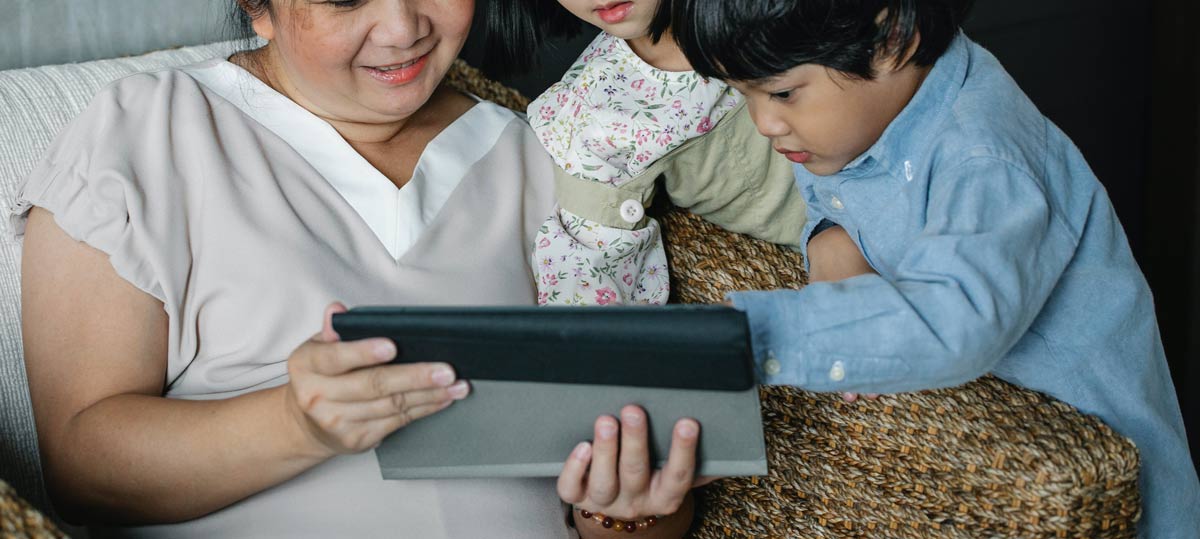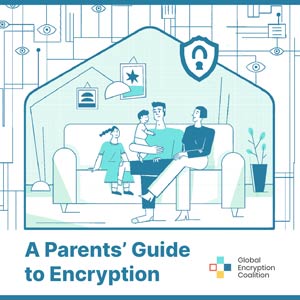To some, encryption might seem like the stuff of spy movies, but we all rely on it to keep us safe. You might be surprised to learn how often it touches your life.
Chances are, you’re using it right now, and you could probably use it more often to better protect yourself online. And more importantly, if you care for children, there are likely ways you could be all using encryption to better keep them safe online.
Children live in a digital world. Even before they start using online tools and games, parents take pictures of their children, share them with family members, and store them online. Parents even buy them connected toys or devices. When they grow up, they use online communication platforms to do schoolwork, play games, make art, and chat with their friends.
As Internet advocates, we believe that part of our job is to keep all kids safe online—we’re passionate about it. We want to make people’s lives easier, make the Internet a safer space, and raise awareness of how important it is for everyone to defend encryption and not let anyone take it away from us.
A Guide to Keeping Kids Safe Online
Encryption keeps kids safe online; there is no doubt about that, but sometimes it is unclear how or if there are unnecessary risks or things we are unaware of that can be easily fixed with guidance. So we decided to do exactly that: create a guide for parents.
As part of the Global Encryption Coalition, the Internet Society has developed A Parents’ Guide To Encryption. The guide was created as a resource to make parents’ and caregivers’ lives easier. It’s meant to help them understand when a situation, a home device, or something collecting private info online might not be completely safe, how to use online tools better, or how to talk to their young children about a complicated issue like privacy, among other things.
The guide covers topics like location sharing, connected home devices, and cloud storage and offers advice, orientation, and practical tips to make your household, devices, and communications safer. It gives you the tools to start the conversation about online safety with your children and raise awareness as a family about protecting yourselves and each other in a fun, engaging, and visually appealing way.
Is the Parents’ Guide to Encryption for Me?
Still unsure if you need to read the guide? If you take photos of your children, use messaging apps to communicate, or have connected home devices, you should review best practices in the guide to make sure you and your children are as safe as possible:
- Many families store harmless photos of their children in the bath on a cloud account. Without encryption, these photos could be more easily stolen, altered, and shared as child sexual abuse material on the Internet.
- If family communications are not encrypted, somebody eavesdropping could access a lot of private information that later can be used to contact the minors, posing as a distant cousin or an old family friend.
- When connected home devices are not encrypted, they become a window to your home, providing a way to monitor your family’s daily routine with audio and video.
As caregivers, we need to provide the best care possible for children. Encryption is a way to enhance that: it empowers parents and caregivers to decide how to share their kid’s information.
People need encryption. Encryption makes them powerful, and it makes their lives safer. It makes them better. And we want to make it even more popular, accessible, and demanded.
Read A Parents’ Guide to Encryption and share it with a parent or caregiver you know today.
Image © Pexels


